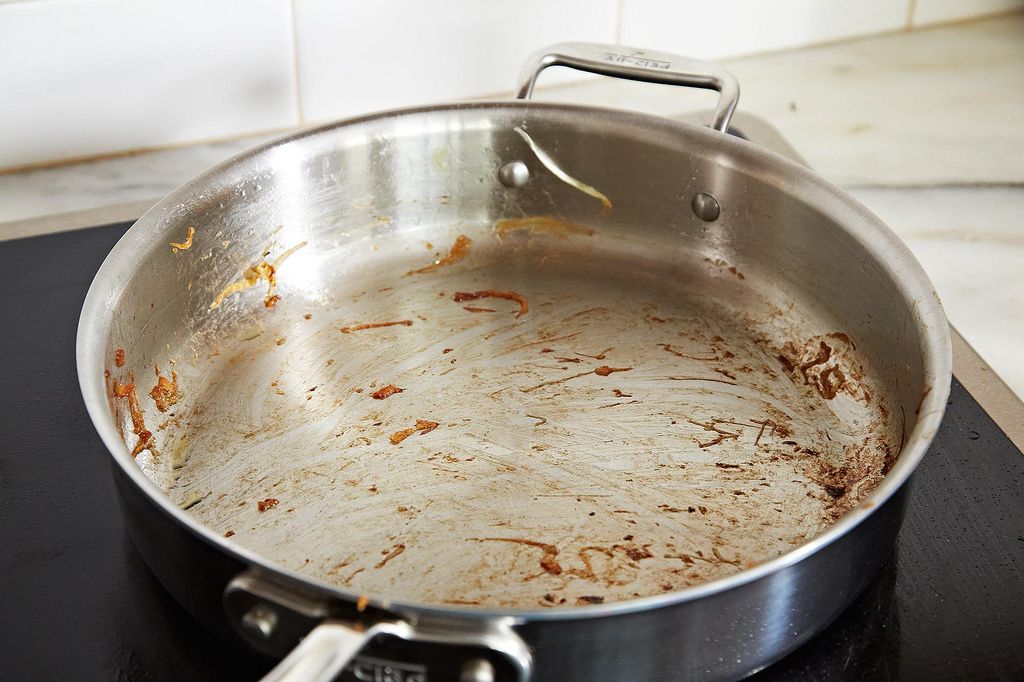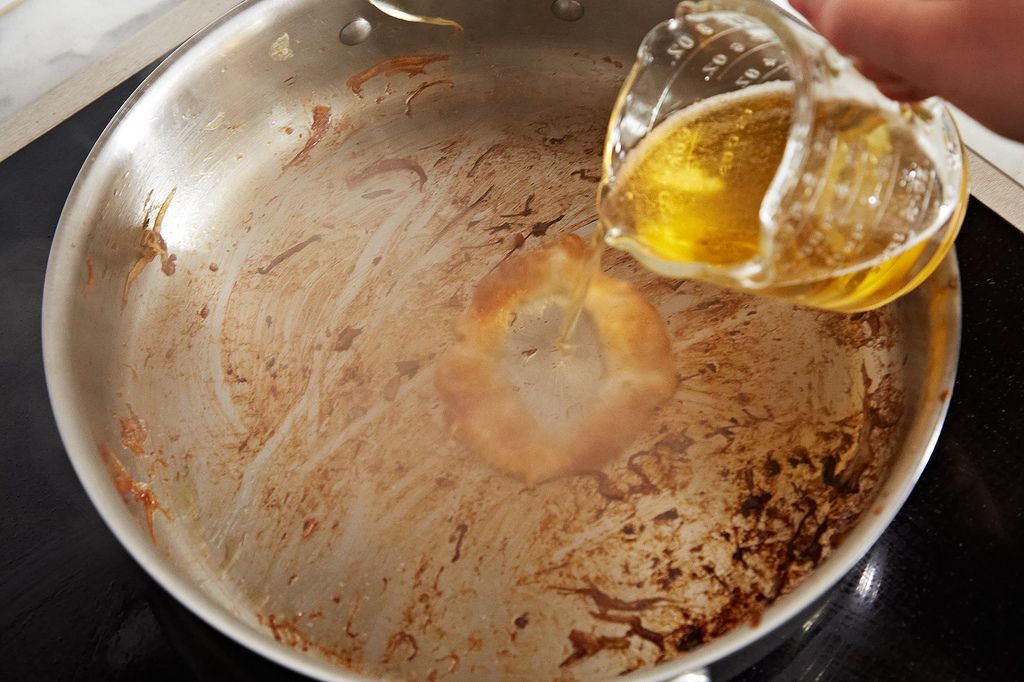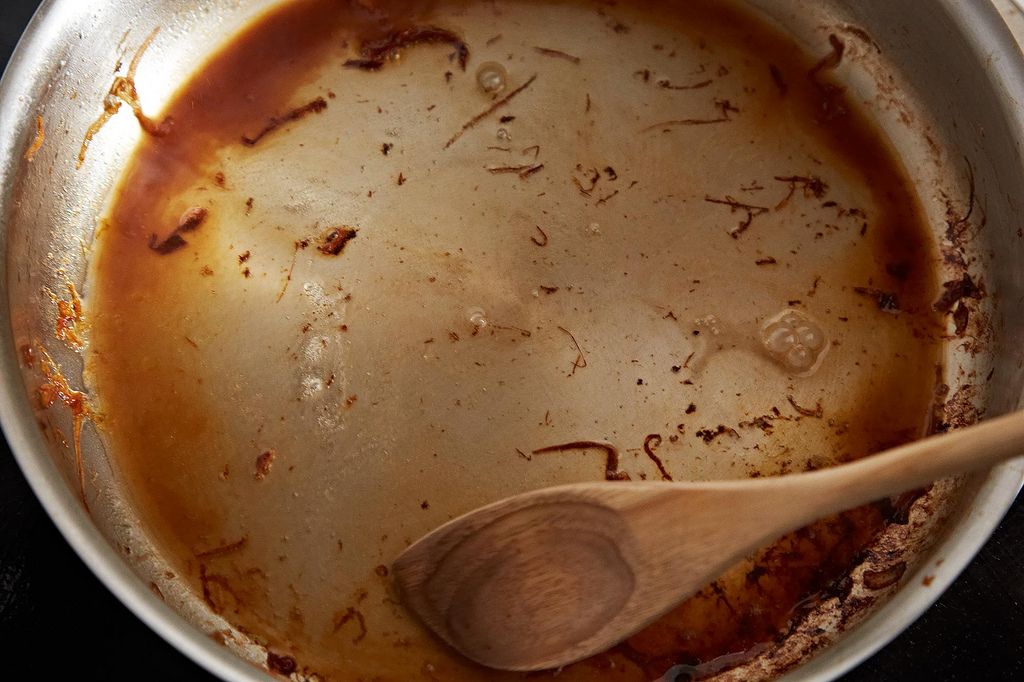Inspired by conversations on the Food52 Hotline, we're sharing tips and tricks that make navigating all of our kitchens easier and more fun.
Today: The simple way make a delicious pan sauce -- and to save yourself time at the sink.

We know what you’re thinking: why would you ever want to deglaze anything? What would honey-glazed shrimp, pumpkin cinnamon rolls, applesauce cake, or ginger soy glazed salmon be without the glaze?
In life, it’s almost always safe to assume that the more glaze, the better. But there is one time when you want to deglaze, and it involves some of your most prized kitchen possesions -- your pans.
To deglaze a pan means to use liquid to release the fond: the fancy French word for the flavorful brown particles that are a pain to wash off your pan after you've roasted or sautéed meat, fish or vegetables. There are two primary reasons to deglaze. First, it's the key to making sauces to accompany what you’ve just cooked -- and it will make clean-up a whole lot easier.
Here's how it's done:
First, remove the food you’ve just cooked from the pan and pour off any liquid. Dump out anything that seems burned -- because that won’t taste good if you’re going to make a sauce -- and return the pan to the heat.

If you are not interested in using the fond to make a sauce, simply deglaze the pan by returning it to heat and adding cool or room temperature water. As the water heats, use a spatula to scrape, scrape, scrape until the pan is nice and clean.
But if you want to capitalize on the delicious fond, where all the flavor of your dish has concentrated, use stock, wine, juice, or vinegar to deglaze, instead. If you are using alcohol to deglaze, make sure to remove the pan from the heat when you're adding the liquid in order to avoid flames.

Pour in enough liquid -- we used beer -- to cover the pan. You only need a few tablespoons, just enough to cover the pan by about half an inch.

As the liquid heats, scrape the bottom of the pan with a wooden spoon or a spatula until all of the fond particles are floating in the liquid. If you’re using a non-stick pan, it’s important to avoid metal, as it could potentially damage your pan.

When the bottom of your pan is clean, congratulations are in order. Not only have you saved yourself time at the sink -- you've also unearthed caramelized, super-cooked bits that are bursting with flavor.
Now, you can use that liquid to make a sauce or gravy that will perfectly complement your meal. Boil the liquid until it’s reduced by half in order to concentrate the flavor and thicken your sauce. Remove from heat, whisk in butter or cream, and serve.
Photos by James Ransom






See what other Food52 readers are saying.